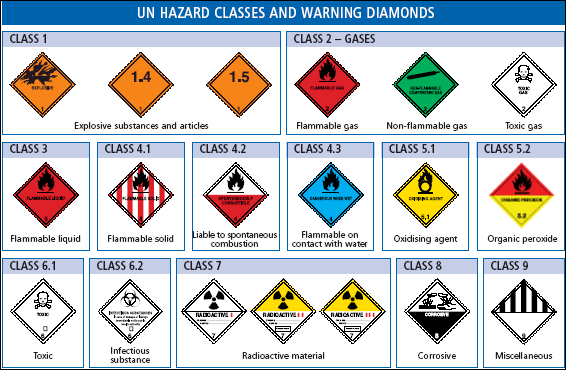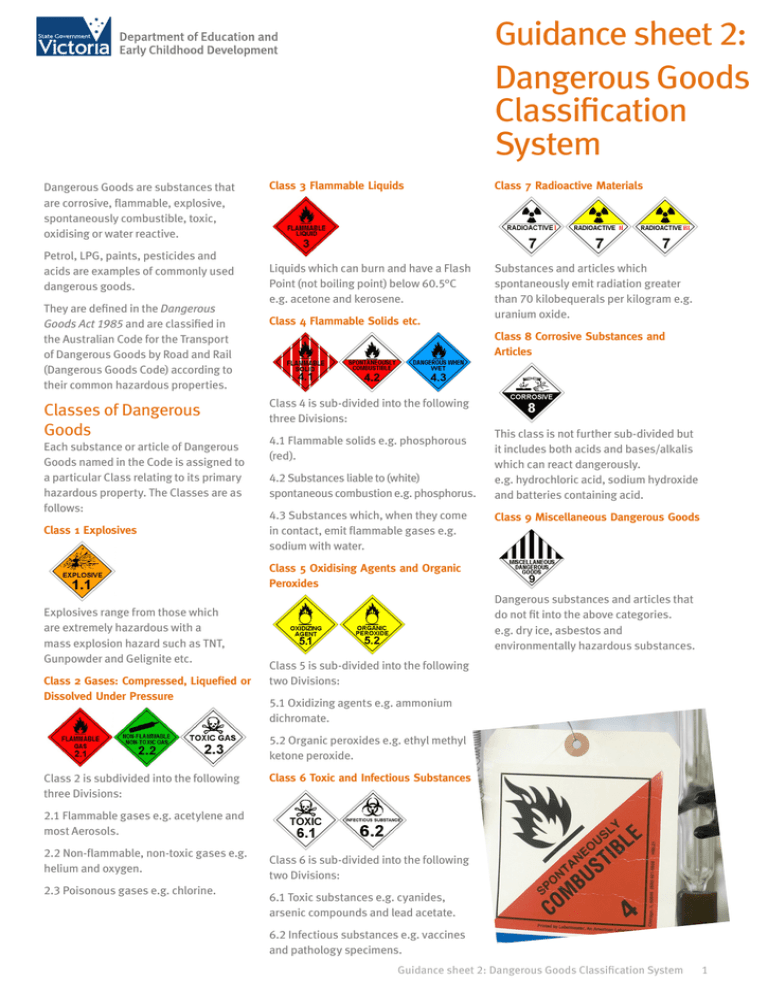16012019 The Australian Dangerous Goods Code establishes all hazardous substances into 9 different dangerous goods classes according to their physical and chemical properties and the risks that they present. These types of goods can range from those which are highly dangerous such as explosives acid or flammables to everyday products such as paints.

Dangerous Goods Logistics Operational Guide Log Digital Logistics Capacity Assessments
Are assigned to different classes ranging from 1 to 9.

Dangerous goods class petrol. Substances including mixtures and solutions and articles subject to this code are assigned to one of nine classes. Commonly transported class 3 dangerous goods include acetone adhesives paints gasoline perfume ethanol methanol and some pesticides with flammable solvents. Highly flammable liquids with a boiling point below 35.
Uncleaned empty static storage vessels that have contained certain gases class 3 flammable liquids PG II and III only or class 9 miscellaneous. In this context static. 07012016 Class 3 Dangerous Goods Examples.
Class 1 explosives. Dangerous goods for transport on land include substances and articles that have explosive flammable toxic infectious corrosive or environmentally hazardous properties and containers that have held dangerous goods. Class 3 flammable liquids.
Click on the DG Class diamonds below for information on each class of hazardous materials. The picture below shows hazard symbols for Class 3 dangerous goods. The FP of diesel is 65C so it has to be heated before it will burn.
Substances and articles which have a mass explosion hazard. Dangerous Goods Guidance and Hazardous Classes Any goods that can pose a risk to people or the environment are classified as dangerous goods. These are labeled accordingly.
Minor Danger DANGEROUS GOODS CLASSIFICATION. Dangerous goods signage which includes a flammable liquids diamond for Class 3 dangerous goods or a sign stating C1 Combustibles for combustible substances. The store must also have a sign that states No Smoking No Ignition Sources Within 3m An example of a compliant dangerous goods store for the storage of diesel fuels is shown below.
Petrol CLASS 4 CLASS 5 Division 41 Division 42 Division 43 Division 51 Division 52 FLAMMABLE SOLIDS SPONTANEOUSLY COMBUSTIBLE SUBSTANCES DANGEROUS WHEN WET OXIDISING SUBSTANCES ORGANIC PEROXIDES eg. The Western Australian dangerous goods safety legislation covers the following Classes and Divisions of dangerous goods. 05062014 Class 9 contains articles and substances that dont meet the criteria for any of the other 8 classes that are considered sufficiently dangerous to be regarded as dangerous goods.
C so it burns readily at normal temperatures. Dangerous Goods Classes Australia. Asbestos DANGEROUS GOODS PACKING GROUPS I.
Silver Nitrate CLASS 6 CLASS 7 CLASS 8 CLASS 9 Division 61 Division 62 MISCELLANEOUS. 16 rows More than 80 of dangerous goods transported belong to Class 3. Coal tar coal tar distillates.
Class 2 gases. Class 3 Dangerous Goods Label. The UN upper limit for Class 3 is normally FP 60C above which the material is not regarded as dangerous for transport.
All classes of dangerous goods are described in table A of the Rule which is based on classifications in the United Nations UN Recommendations on the transport of dangerous goods. Ethyl Mercaptan LPG odourants Gas oil. 33 rows Class 3.
The FP of petrol is -40. More info about the marking and labelling of. Class 9 includes substances that are regarded as cancer producing or carcinogens irritants fire risk asphyxiants and substances that are environmentally hazardous.
Gasoline Petrol Diesel fuel Aviation fuel Liquid bio-fuels Coal tar Petroleum crude oil Adhesives Gas oil Shale oil. Further divided into divisions. There are also goods too dangerous to transport and C1 combustible liquids.
However diesel came within the full scope of the Regulations recently. 9 Classes of Dangerous Goods _____ Rev00 Updated 19 Mar 2019 1 Class 1 - Explosives CLASS 1 EXPLOSIVES SUB-DIVISIONS Division 11. As the Australian dangerous goods code explains.
CLASS 6 CLASS 7 CLASS 8 CLASS 9 Division 61 Division 62 MISCELLANEOUS DANGEROUS GOODS TOXIC SUBSTANCES INFECTIOUS RADIOACTIVE CORROSIVE eg.

Iata Dangerous Goods Regulations 54th Edition English Jafa

Customs Clearance Dangerous Goods Logistics Information Customs Clearance Of Goods In Vladivostok

Dangerous Goods Classification Aeg Logistics Effective Smart Logistics

Classification Of Dangerous Goods Download Table

Guidance Sheet 2 Dangerous Goods Classification System
Excommerce America The 9 Classes Of Dangerous Goods Dangerous Goods Are Materials Or Items With Hazardous Properties Which If Not Properly Controlled Present A Potential Hazard To Human Health And Safety
Dangerous Goods Class 9 Shop Safety Genius



0 comments:
Post a Comment